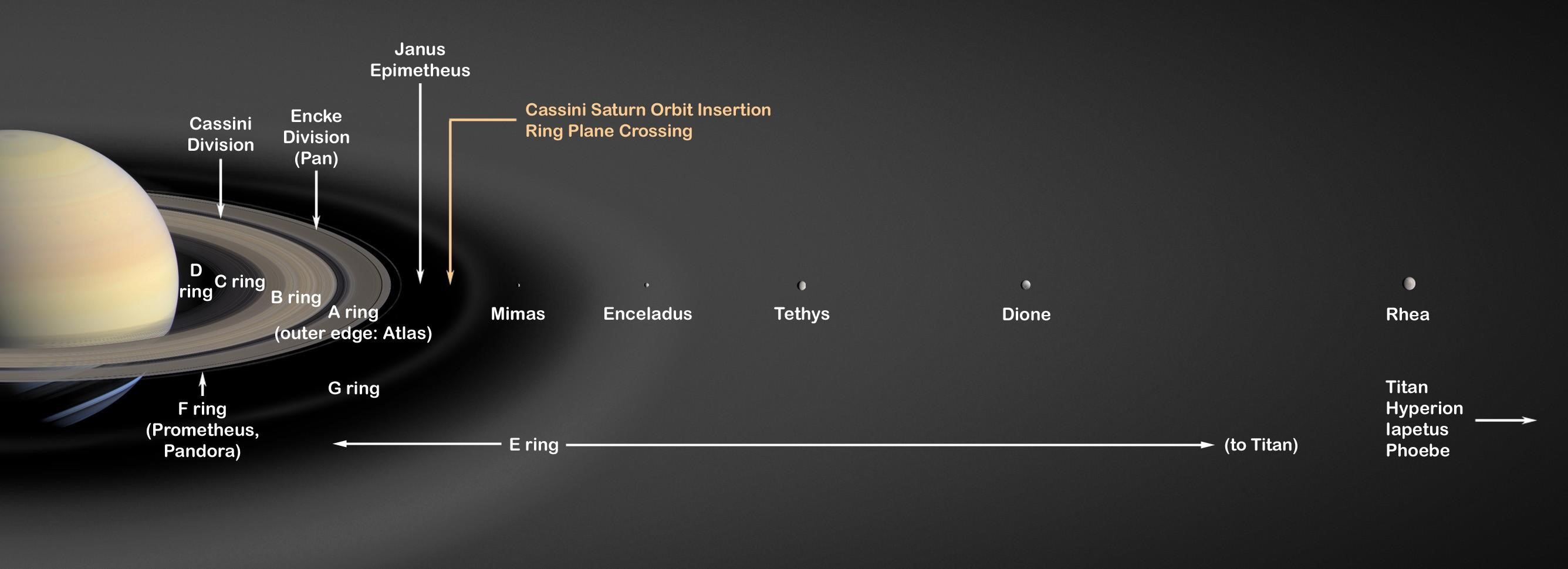Description

Disclaimer: Copyright infringement not intended.
Context
Saturn's rings will seemingly disappear from Earth's view in 2025.
Details
Temporary Disappearance in 2025
- Tilt and Orbital Motion: Similar to Earth, Saturn's axis of rotation is tilted (26.7 degrees). Additionally, its enormous ring system is also tilted concerning the plane of Saturn's orbit.
- Alignment with Earth: As Saturn completes its 29.5-year orbit around the Sun, every 13 to 15 years, the edge of its rings aligns directly with Earth's line of sight.
- Thin Rings: The rings, which are very thin (just tens of meters thick in most places), reflect very little light when viewed edge-on, making them essentially invisible.
- Optical Illusion: This alignment, combined with the thinness of the rings, creates an optical illusion, making the rings appear as if they have disappeared from Earth's perspective.
- March 2025 Event: In March 2025, Saturn's rings will be perfectly aligned with Earth's line of sight, causing them to be invisible. The rings will gradually become visible again as Saturn continues its orbit.

Potential Future Loss of Rings
- NASA's 2018 Report: According to a 2018 report by NASA, Saturn might lose its rings completely in the next 300 million years or even sooner.
- Ring Rain: The report suggests that the rings are being pulled into the planet by its gravity due to a process called "ring rain," where icy particles under the influence of Saturn's magnetic field are drained away. This process could lead to the eventual loss of the rings.
- Limited Lifespan: Saturn, estimated to be four billion years old, acquired its rings much later in its life, and the rings are not older than 100 million years.
- Saturn's Ring System's Lifetime: The report notes that Saturn's ring system appears to be in the middle of its lifetime, and the rings might be temporary. This raises the possibility that other gas giants like Jupiter, Uranus, and Neptune might have had larger ring systems in the past.
About Saturn
- Saturn is the sixth planet from the Sun in our solar system and is easily recognizable by its stunning ring system.
Physical Characteristics:
- Size and Mass: Saturn is the second-largest planet in our solar system, after Jupiter. It has a diameter of about 116,464 kilometers (72,366 miles) and is approximately 95 times the mass of Earth.
- Composition: Like Jupiter, Saturn is a gas giant primarily composed of hydrogen and helium. It lacks a solid surface, and its outer layers are primarily composed of gas.
Atmosphere:
- Cloud Bands: Saturn has prominent cloud bands in its atmosphere, with winds reaching speeds of up to 1,800 km/h (1,118 mph).
- Storms: Saturn experiences large storms, including the famous Great White Spot, a massive storm system that occurs roughly once every Saturnian year (about 29 Earth years).
Magnetic Field:
- Saturn has a strong magnetic field, but it is not aligned with its rotational axis, causing a unique magnetic field structure.
Moons:
- Saturn has a vast system of moons, with over 80 known moons. The largest moon, Titan, is of particular interest due to its thick atmosphere and hydrocarbon lakes.
Rings of Saturn
Ring Formation:
- Composition: Saturn's rings are made up of icy particles, rocky debris, and dust. Despite their brilliant appearance, the rings are relatively thin, with a maximum thickness of about one kilometer.
Ring Structure:
- Main Rings: The rings are divided into several main groups, including the A, B, and C rings. The Cassini Division is a gap in the rings that separates the A and B rings.
- Ring Particles: The ring particles range in size from tiny grains to larger chunks, and they orbit Saturn in a flat, disk-like structure.
Ring Dynamics:
- Shepherd Moons: Some of Saturn's small moons, known as shepherd moons, help maintain the distinct ring structures by gravitationally interacting with the ring particles.
Ring Origins:
- Formation Theories: There are several theories regarding the origin of Saturn's rings, including the possibility that they are remnants of a shattered moon or formed from material in the early solar system that never coalesced into a larger body.
.jpg)
Exploration:
Pioneer and Voyager Missions:
- Pioneer 11 and Voyager 1 & 2: These early spacecraft provided the first close-up views of Saturn and its rings, offering valuable insights into the planet's atmosphere and ring structure.
Cassini-Huygens Mission:
- Cassini Orbiter: Launched in 1997, the Cassini spacecraft orbited Saturn for over 13 years, providing an unprecedented amount of data on the planet, its rings, and its moons.
- Huygens Probe: In 2005, the Huygens probe descended to the surface of Titan, providing the first direct observations of Titan's surface.
|
PRACTICE QUESTION
Q. Explain the phenomenon of the temporary disappearance of Saturn's rings from Earth's view in 2025. Discuss the scientific reasons behind this event, touching upon Saturn's axial tilt, orbital motion, and the optical illusion created by its thin ring system. (250 Words)
|











